Twice Thought Dead, Pilot Endures
*IN MEMORIAM*
Eddy Fayle passed away April 6, 2018. He will be buried at Arlington National Cemetery.
Use controls above or click here to open this Hometown Heroes podcast in a new window
94-year-old Eddy Fayle appears on episode #351 of Hometown Heroes, debuting January 24, 2015. A native of France, Fayle was destined to serve in the U.S. Navy, and has the photographic evidence to prove it.
It was World War I which brought his parents together. His father, Edmond, was a U.S. naval officer whose overseas duty allowed him to encounter Eddy’s mother, Mercedes. Eddy was born in Bordeaux in 1920, and while his father continued to sail the world, Eddy was raised by his mother and grandmother in France.
After his mother moved to the U.S., a 19-year-old Eddy joined her in New Jersey in 1939, quickly earning a degree from St. Peter’s College. Listen to Hometown Heroes to hear the idea Eddy and his father had for why becoming a naval aviator would be a good career move. By 1941, he had earned his wings, and found himself training in torpedo bombers in Norfolk, VA with the newly formed Torpedo Squadron 8.
Norfolk is where Fayle was on December 7, 1941. Listen to the interview to find out the unique way in which he learned of the attack on Pearl Harbor, and why he wasn’t exactly where he was supposed to be at that time. Before long, Eddy and Torpedo Squadron 8 were boarding the USS Hornet and heading out to sea. He was on the Hornet on April 18, 1942, when Jimmy Doolittle and his “Raiders” took off for their daring mission to Tokyo. You’ll hear him remember what he saw from the carrier’s deck that day, as well as the one activity that brought Navy pilots and Army Air Corps pilots together. A month later, VT-8 was in Hawai’i, about to set sail for what would become the Battle of Midway.
Midway was a chaotic and complex four-day battle that proved to be a pivotal victory for American forces, but it came at a severe price, including the near total destruction of Torpedo Squadron 8. 30 men, led by Lieutenant Commander John C. Waldron, took off from the Hornet.
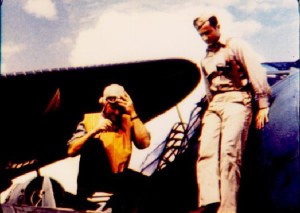
Ensign Eddy Fayle (right) on the wing of his TBD, aboard the USS Hornet in May 1942. This image is taken from the film John Ford made to memorialize the men of Torpedo Squadron 8 who died at Midway.
Only one man, Ensign George Gay, lived to tell the story. News coverage at the time, including a lengthy piece in LIFE Magazine, led some to believe that Fayle had perished with his squadron that day. A close examination of the story yields a parenthetical “transferred” next to Fayle’s name in the photo, but the truth is Fayle was hospitalized back on Oahu while his squadron met its tragic fate at Midway. You’ll hear Fayle explain what pineapples and sugar cane had to do with his absence, and relate the visit he received from VT-8’s sole Midway survivor, George Gay, after the battle. “I’m sorry I missed it,” Fayle remembers telling Gay. “Don’t be sorry,” Gay responded. “I’m the only one left.” The TBDs attacked without fighter escort at Midway, and were decimated by enemy artillery and fighter planes. Fayle still believes that he, like Gay, would have found a way to survive the battle. That bravado may make some bristle, especially in the wake of some historical accounts that questioned Fayle’s commitment or courage after he missed out on Midway, but any questions about his fearlessness or devotion to the cause are rendered baseless when considering the events of August 24, 1942.
Fitting the pattern of never exactly being where he was supposed to be, you’ll hear Fayle recall that he wasn’t even supposed to fly from the USS Saratoga that day, and why his TBF Avenger, built for a three-man crew, actually carried four men into the air for the Battle of the Eastern Solomons. You’ll hear why he broke from the formation to make a torpedo attack on a Japanese cruiser, how his gunners shot down two Japanese planes – one piloted by an enemy ace – and how he realized that his own aircraft was severely damaged. His actions would ultimately led to his being recognized with second-highest American military medal, the Navy Cross. “His courageous fighting spirit and fearless devotion to duty, maintained with utter disregard for his own personal safety,” his Navy Cross citation states. “Aided greatly in the defeat of the Task Force.” It also nearly resulted in his death, but Fayle, minus his navigational plotting board because he wasn’t prepared to fly that day, aimed for the smallest island he could spot, and brought the TBF down in water deep enough to allow the plane to sink below the surface. All four men survived, took their raft to shore, and waited to see if there were any Japanese forces on the tiny strip of land.
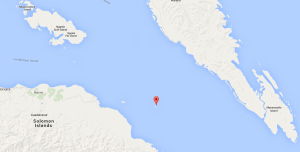
The tiny island of Nura in the Solomons, where Fayle and his crew survived until their rescue by the USS Gamble.
Listen to Hometown Heroes to learn the unique ways in which Fayle and his men captured coconuts and hunted moray eels. They used their raft to collect rain water, and had a few rations remaining that aided in their survival. Spotted by a coastwatcher plane, they were eventually rescued by the USS Gamble, although they weren’t sure at the time whether the Gamble was a safer location than the island had been. Fayle continued to fly missions until returning to the states in late 1943, assigned at the point to Patuxent River Naval Air Station in Maryland. He tested captured enemy airplanes like the Zero and ME-109, as well as U.S. military planes, and later trained both British and French pilots.
In his retirement years, Fayle spent two decades sailing around the Caribbean, and he says he’d love to go back to Nura and dive for the wreckage of his TBF. His 94-year-old body may not allow him that opportunity, but age doesn’t stop him from continuing as a tireless stock market “day trader” as he alternates time with his three children in California, Ohio, and Florida. Another surreal moment you’ll hear Fayle describe came in a visit to a Washington, D.C. museum. The famous photo of Torpedo Squadron 8 that had appeared in LIFE Magazine was displayed, with the explanation that everyone in the photo except George Gay had died at Midway. You’ll hear how Fayle handled the situation, as well as his simple advice for anyone who find himself, like he did, stranded on an island. A very active nonagenarian, Eddy recently got to visit with some of today’s Navy men and women at Naval Air Station Lemoore, and he looks forward to more adventures. If you happen to encounter this decorated veteran with his unmistakably French accent, make sure you thank “Frenchy” for his service to our country.
—Paul Loeffler

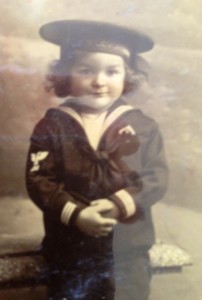
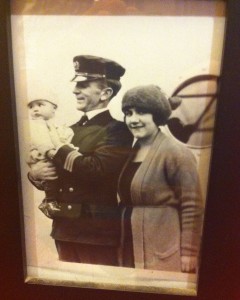
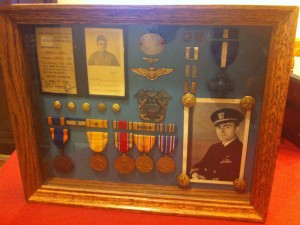
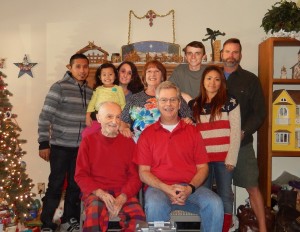
Ed Fayle is my grandfather. Thank you so much for adding his story to your library of testimonies from America’s greatest generation. The detail you captured in your interview was FAR beyond anything I’d ever heard from him before. I grew up in Ohio and Eddy, whom we always called “Skipper”, spent most of his days in either Maryland or the Florida Keys. He was an avid sailor and a big part of why I joined the Navy myself. I’m going to visit him in April ’16 in Florida and will be able to spend some real time getting his take on life. I just wanted to say I sincerely appreciate your show and how you get history first-hand from this amazing generation to share with your listeners. God bless you and all those you’ve honored.
how can i get in touch with “Frenchy” Fayle.. the gunner on the plane wing with Fayle was A.W. “Pic” Picou (killed at Midway)… from this area of Louisiana.. want to learn more about him.. can anyone connect me?
I’ll work on that.
Wow, great article. Skipper was my grandfather as well,thank you so much for the tribute.
Just a huge thank you to Hometown Heroes…as the oldest grandchild of ‘Frenchy’ to his WWII buddies, Eddy to his civilian friends, Skipper to his family (Pop-pop when I was real young), and ELFIN to anyone who knew his boats…it brings tears to my eyes when I hear the man that taught me how to play chess (I only ever beat him ONCE) again after we lost him earlier this year…he would never talk about the war and this actually was more than we ever heard before but it’s great to be able to bring this up and hear his voice again – Love You Skipper, I’m not mad and I miss you VERY much…I can still go back in my mind to all those days in Deale, the big back yard, the date tree and times sailing out on the Chesapeake Bay with you…kiss Meme and Pepe for me – LOVE YOU.
Thank you again, Paul, for doing Hometown Heroes! I am Eddy’s son and you interviewed him right here in my kitchen back then in 2015. Dad died a year and half ago, but just today I had the opportunity to point out this online radio interview to a neighbor who was asking about him. It’s an honor to have Dad’s Navy story available to share and it was a pleasure to hear his voice again. THANK YOU and Hometown Heroes Radio for helping my family and clan have this sweet and permanent treasure. And Dad: I will meet you there where mercy leads.
A.W. “Pic” Picou was KIA 4 June 1942 with his Pilot Ensign WW Abercrombie in the TBD Devastator T-13 (BuNo 0372). Abercrombie was Eddy Fayle’s replacement pilot on that fateful day. Fair wind and a following sea……May they all rest in peace.
So sorry…..haste makes waste. AW “PIC” Picou was in TBD T-12 (BuNo 0311) piloted by AP1 Robert Miles. However, Abercrombie was Fayle’s replacement. I don’t know how Pic ended up with Miles.
A.W. “Pic” Picou was KIA 4 June 1942 with his Pilot AP1 Robert Miles in the TBD Devastator T-12 (BuNo 0311). Ensign WW Abercrombie was Eddy Fayle’s replacement pilot on that fateful day. Fair wind and a following sea……May they all rest in peace.